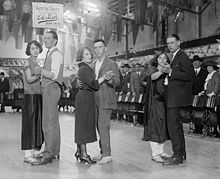Now that Memorial weekend is over, our thoughts turn to summer. Vacation. Camping. Cookouts. All those fun relaxing days. (I wish.) And of course S'mores.
 How did the combination of graham crackers, marshmallows, and chocolate come to be? It seems that the convergence of those three ingredients happened shortly after the three were produced for mass market. Hershey's bars were made during World War I and shipped overseas for the troops, but after that, they expanded the market domestically. Graham crackers were introduced and marketed in 1925, and the marshmallow was hooked up with the campfire idea back in 1917. In fact a brand of marshmallows sold starting in 1917 under the name of Campfire Marshmallows.
How did the combination of graham crackers, marshmallows, and chocolate come to be? It seems that the convergence of those three ingredients happened shortly after the three were produced for mass market. Hershey's bars were made during World War I and shipped overseas for the troops, but after that, they expanded the market domestically. Graham crackers were introduced and marketed in 1925, and the marshmallow was hooked up with the campfire idea back in 1917. In fact a brand of marshmallows sold starting in 1917 under the name of Campfire Marshmallows.These three ingredients came together during the early 1920s when the marshmallows were roasted over a campfire and squeezed between the two graham cracker pieces along with a square of Hershey's chocolate. This yummy treat was brought into modern culture when the Girl Scout Handbook titled "Tramping and Trailing with the Girl Scouts" published the recipe in 1927. At that time the treat was called "Some Mores" since everyone wanted more after they tasted the first one. Sounds reasonable to me.
By 1937 the recipe circulated far and wide and was generally a favorite for all campers or anyone who sat by a campfire. The title of the snack changed to the short-hand version of "S'mores", which is still the common name for this treat today.
Since then, S'mores has become a staple for anyone with a campfire. In fact, you can get S'mores in any type of snack items from ice cream treats, to pop tarts, to cupcakes, or pies with the same three ingredients and same great taste.
In fact, there is a National S'mores Day on August 10. So practice up your S'more making until that important day this summer and enjoy this favorite treat over a campfire, or sitting in your kitchen.
Has your mouth started watering yet?
Information taken from History of Marshmallows and History of S'mores








